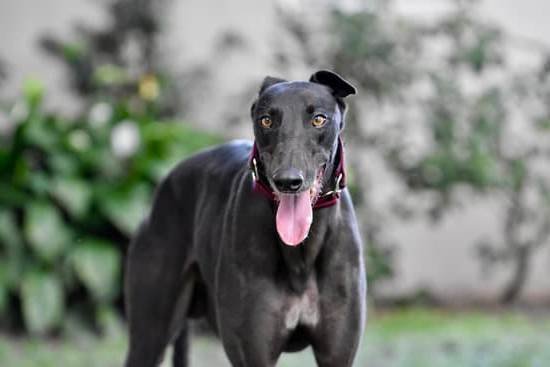As a pet owner, you may want to know how to train your dog to sit at a restaurant. Teaching your furry friend to be well-behaved in public settings can make outings more enjoyable for both you and your beloved companion. In this article, we will explore the importance of training your dog to sit at restaurants and provide valuable tips on how to accomplish this.
When it comes to taking your dog out for a meal, choosing the right restaurant is crucial. Not all establishments are pet-friendly, so finding ones that welcome well-behaved dogs is essential. We will discuss how to identify dog-friendly options and what to look for in a restaurant before bringing your pup along.
Preparing your dog for dining out involves basic obedience training, which is fundamental for their behavior in a restaurant setting. We will delve into the key aspects of obedience training that are necessary for teaching your dog how to sit at restaurants and behave appropriately. Additionally, we will touch upon the importance of socializing your dog in various environments, including restaurants, to help them acclimate to new situations.
Choosing the Right Restaurant
When training your dog to sit at a restaurant, it is important to choose the right dining establishment that welcomes four-legged guests. Before even beginning the training process, take some time to research and find restaurants that are known for being dog-friendly. Look for establishments with outdoor seating areas where dogs are not only allowed but also welcomed.
Many restaurants have specific policies regarding dogs on their premises, so be sure to call ahead and ask about their pet policy. Some restaurants may allow dogs in outdoor seating areas only, while others may have specific rules about dog behavior. It’s also a good idea to check if there are any size or breed restrictions for dogs.
Additionally, consider the atmosphere of the restaurant and whether it would be suitable for your dog. For example, a calm and quiet restaurant with ample space between tables may be more conducive to training your dog than a busy, crowded establishment. Choosing the right restaurant sets the stage for successful training sessions with your furry companion.
Lastly, it’s also essential to ensure that your chosen restaurant provides access to facilities such as water bowls or designated potty areas for your dog’s comfort during your visit. By taking these factors into consideration when selecting a dog-friendly restaurant, you can set yourself and your pet up for success in learning how to behave appropriately in public dining settings.
| Restaurant Factors | Considerations |
|---|---|
| Pet Policy | Check rules and regulations regarding pets |
| Atmosphere | Consider calm and spacious environments |
| Amenities | Ensure access to water bowls and potty areas |
Preparing Your Dog
When it comes to training your dog to sit at a restaurant, basic obedience training is essential. This foundation of good behavior will set the stage for success in a restaurant setting. Here are some key elements to consider when preparing your dog for dining out:
Start With Sit and Stay Commands
Before you even set foot in a restaurant with your dog, it’s important to work on basic commands such as “sit” and “stay.” These commands will be crucial for keeping your dog well-behaved and under control while at the restaurant. Practice these commands consistently in different environments to ensure that your dog can follow them even amidst distractions.
Leash Manners
Another important aspect of basic obedience training for restaurants is teaching your dog proper leash manners. This includes walking nicely on a leash without pulling, as well as sitting calmly when you come to a stop. Practicing these skills during walks and outings will help prepare your dog for staying composed while at a restaurant.
Table Manners
In addition to basic commands and leash manners, it’s also beneficial to work on table manners with your dog. This includes teaching them to stay calm and quiet while sitting near a table or when food is being served. Training your dog to refrain from begging or attempting to grab food off tables will contribute to their overall good behavior in a restaurant setting.
By focusing on these aspects of basic obedience training, you can help prepare your dog for sitting politely at restaurants. Consistent practice and positive reinforcement will play a crucial role in shaping their behavior and ensuring that they are well-behaved dining companions.
Socialization
Gradual Exposure to Restaurants
When training your dog to sit at a restaurant, it’s important to gradually expose them to different restaurant environments. Start by taking your dog to outdoor cafes or dog-friendly patios where they can observe the sights and sounds of a restaurant setting from a safe distance.
Over time, gradually move closer to the main dining areas while monitoring your dog’s behavior and comfort level. This gradual exposure will help your dog become familiar with the environment and reduce any anxiety or stress they may experience.
Introducing Your Dog to New Experiences
Socialization is key when training your dog to sit at a restaurant. Introduce your dog to new experiences such as crowded spaces, unfamiliar smells, and the presence of other people and pets. This will help them become more comfortable and confident in different settings, making it easier for them to behave appropriately at restaurants. Use positive reinforcement techniques such as treats and praise to create positive associations with these new experiences.
Practicing Good Behavior in Public
Once you have exposed your dog to various restaurant environments, practice good behavior in public settings such as sitting calmly at your side, ignoring distractions, and following basic commands like “sit” and “stay.” Keep training sessions short and enjoyable for your dog, gradually increasing the duration as they become more comfortable. By consistently practicing good behavior in public, you can help your dog develop the skills necessary to sit politely at a restaurant without causing any disruptions.
Using Positive Reinforcement
When it comes to training your dog to sit at a restaurant, positive reinforcement is key. This training method focuses on rewarding your dog for exhibiting the desired behavior, in this case, sitting calmly at a restaurant. By using positive reinforcement, you can effectively communicate to your dog what is expected of them in a restaurant setting.
There are several effective reward-based training methods that can be used to teach your dog to sit at restaurants. Here are some examples:
- Clicker Training: Using a clicker to mark the moment your dog sits, followed by a treat as a reward.
- Treat Rewards: Using small, delicious treats as a reward for sitting at the restaurant and staying calm.
- Praise and Affection: Verbal praise and affectionate gestures from you can also serve as rewards for your dog’s good behavior at the restaurant.
It’s important to remember that consistency is key when using positive reinforcement. You should always reward your dog immediately after they exhibit the desired behavior of sitting calmly at the restaurant. Over time, your dog will learn to associate sitting at restaurants with positive rewards, making them more likely to repeat this behavior.
In addition, it’s important to gradually increase the duration of sitting at a restaurant before offering a reward. This will help your dog understand that they need to remain seated for an extended period of time in order to earn their reward. With patience and consistency, positive reinforcement can be an effective method for training your dog to sit at restaurants.
Handling Distractions
Training your dog to sit at a restaurant involves more than just basic obedience commands. It also requires teaching your furry companion to stay focused and composed, even in the presence of various distractions. Whether it’s other diners, smells from the kitchen, or new sounds, there are several strategies you can use to help your dog maintain their composure while dining out with you.
One effective method for teaching your dog to stay focused is through gradual exposure to distractions. Start by practicing in a quiet environment and gradually introduce more distracting elements as your dog becomes more proficient at sitting on command. This could involve training sessions in outdoor cafes or on bustling sidewalks to accustom your dog to different noises and movements.
Positive reinforcement is key when training your dog to stay focused amidst distractions. Reward good behavior with treats, praise, and affection whenever your dog successfully follows the sit command in a distracting environment. By consistently rewarding positive behavior, you can help reinforce the desired response in your pet.
It’s important to remember that every dog is unique and may respond differently to training methods. Some dogs may require more patience and practice when it comes to handling distractions, so it’s essential to remain patient and consistent with your training efforts. With time and dedication, you can teach your dog how to focus and remain composed even in the most stimulating restaurant settings.
| Training Method | Effectiveness |
|---|---|
| Gradual Exposure to Distractions | Effective for acclimating dogs to different environments |
| Positive Reinforcement | Reinforces good behavior during training sessions |
| Patient Consistency | Vital for addressing individual differences in dogs’ responses |
Etiquette
Training your dog to sit at a restaurant involves more than just teaching them the basic command. It also requires ensuring that your furry friend behaves appropriately in a public setting. Here are some tips on etiquette to ensure your dog’s behavior is appropriate for the restaurant setting:
- Keep Your Dog on a Leash: When entering the restaurant, make sure to keep your dog on a leash at all times. This will not only ensure that they stay close to you, but it also shows respect for the other patrons and staff.
- Respect Other Diners: Not everyone may be comfortable around dogs, so it’s important to be mindful of other diners. Keep your dog from approaching other tables or disturbing other guests during their meal.
- Clean Up After Your Dog: Accidents can happen, so be prepared with waste bags in case your dog needs to relieve themselves. Always clean up after your pet and inform the staff if any accidents occur.
In order to maintain good etiquette at a restaurant, it is essential that both you and your dog are well-prepared for the outing. By following these guidelines, you can ensure that your dog’s behavior is appropriate for the restaurant setting, allowing you to enjoy quality time with your well-behaved pet while dining out.
Practice Makes Perfect
Training your dog to sit at restaurants requires consistency and patience. Just like any other training, it takes time for your furry friend to understand what is expected of them in a restaurant setting. Therefore, it is important to be patient and consistent with your training methods.
When teaching your dog to sit at a restaurant, consistency is key. Use the same commands and gestures each time you practice at home or in a controlled environment. Consistency will help your dog understand what is expected of them and reinforce good behavior.
In addition to consistency, patience is crucial when training your dog to sit at restaurants. Every dog learns at their own pace, so it’s important not to get frustrated if progress seems slow. Stay calm and positive during training sessions, and remember that patience will ultimately lead to success in teaching your dog proper restaurant etiquette.
Remember that every dog is different, and some may take longer than others to grasp the concept of sitting at a restaurant. By being consistent with your training methods and maintaining patience throughout the process, you can effectively teach your dog how to behave appropriately in a restaurant setting.
Troubleshooting
Training your dog to sit at a restaurant can come with its challenges, but with patience and consistency, you can address common issues that may arise during the training process. One of the most common challenges pet owners face is distractions. Restaurants are often busy places with many different sights, sounds, and smells that can easily distract your furry friend.
To address this challenge, it’s important to gradually expose your dog to these stimuli in a controlled manner during training sessions. Start in a quiet outdoor patio or low-key dining area and gradually work your way up to busier environments.
Another common challenge when training your dog to sit at a restaurant is controlling their excitement. Dogs are naturally curious and social animals, so it’s not uncommon for them to get excited when surrounded by new people and other dogs at a restaurant.
To manage this, it’s essential to practice impulse control exercises at home before bringing your dog to a restaurant setting. This could involve teaching your dog to wait patiently for food or attention, as well as rewarding calm behavior.
It is also crucial to be prepared for the unexpected during the training process. Your dog may exhibit new behaviors or reactions in a restaurant environment that they haven’t displayed before. It’s important to stay calm and composed in these situations and address any issues as they arise using positive reinforcement techniques.
Remember that every dog is unique, so it’s essential to tailor your training approach based on your pet’s individual needs and temperament. With time and dedication, you’ll be able to troubleshoot these challenges and enjoy quality time with your well-behaved dog at restaurants.
Conclusion
In conclusion, training your dog to sit at restaurants is not only a practical skill but also a great way to enjoy quality time with your furry companion in various social settings. By following the tips and techniques outlined in this article, you can ensure that your dog becomes well-behaved and adaptable to restaurant environments.
Remember that choosing the right restaurant, preparing your dog through obedience training, socializing them to different settings, using positive reinforcement, and maintaining consistency are all crucial steps in this process.
Having a well-behaved dog at restaurants not only allows you to enjoy dining out without worrying about their behavior but also fosters a strong bond between you and your pet. It’s important to always remain patient and understanding during the training process, as every dog learns at their own pace. With time and dedication, you will be able to take your well-behaved dog with you to various restaurants without any hesitation.
In closing, training your dog to sit at restaurants requires effort and patience, but the rewards are well worth it. Enjoying quality time with your furry companion in new environments is not only fun but also strengthens the bond between you. So keep practicing, remain consistent, and soon enough, you’ll be able to confidently take your well-behaved dog with you wherever you go.
Frequently Asked Questions
How Do I Get My Dog to Calm Down at the Restaurant?
Getting your dog to calm down at a restaurant begins with proper training and socialization. Start by teaching them basic obedience commands like “sit” and “stay.” Gradually expose them to different environments, including restaurants, and reward good behavior.
Can a Dog Sit at the Table in a Restaurant?
In general, dogs are not allowed to sit at the table in a restaurant. It’s important for them to stay on the floor or in their designated area. Some restaurants may have outdoor seating where well-behaved dogs on leashes are allowed, but they shouldn’t be sitting at the table.
How Do I Train My Dog to Sit While Eating?
Training your dog to sit while eating involves consistent practice and positive reinforcement. Start by having them sit before you put their food bowl down. Use treats and praise to reinforce the behavior. With time and consistency, your dog will learn to sit calmly while you eat.

Welcome to the blog! I am a professional dog trainer and have been working with dogs for many years. In this blog, I will be discussing various topics related to dog training, including tips, tricks, and advice. I hope you find this information helpful and informative. Thanks for reading!





